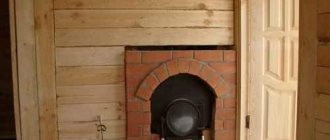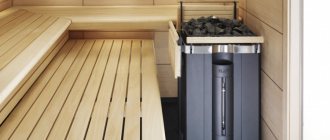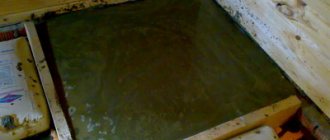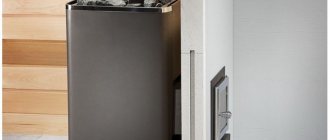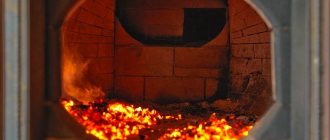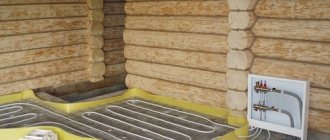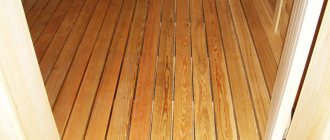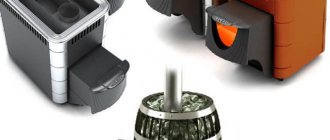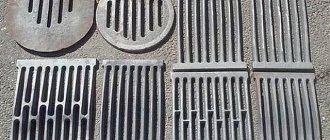The need for a flue sheet when installing a fireplace, sauna or heating stove, as well as a garden barbecue, etc. is due to the very obvious requirement to comply with fire safety, because the contact of sparks or burning coals with a wooden floor (or other flammable coating) can result in irreversible and sometimes tragic consequences. In addition, the lining sheet can additionally perform a decorative function and makes it easier to maintain cleanliness in the stove area: debris and dust can be easily removed from it with a special brush or a damp cloth.
Fire safety requirements
Since the structure of the stove heats up to high temperatures, and combustion products pass through the pipe and chimney, when choosing the installation location of the stove, its size, material, and when installing the stove in a bathhouse, it is necessary to be guided by fire safety requirements.
- If the bathhouse is made of non-combustible materials, then additional thermal insulation of the structure will not be needed; you will only need to protect the floor with a metal sheet. In a wooden bathhouse, the niche for installing the stove must be insulated; this can be done using brick or stone masonry.
- The foundation of the furnace is covered with heat-resistant material. These can be panels made of pressed mineral wool, sheets of mica or foam glass.
- The location of the stove in the bathhouse should be such that the distance between the top of the stove and the ceiling of the steam room is at least 1.2 m.
- The combustion door is located at a distance of at least 1.2 m from the doors.
- A fireproof floor measuring at least 0.4 x 0.8 m is installed in front of the door. A metal sheet is used as a universal solution for this, on which it is also convenient to store firewood and heating tools.
- How to properly install a stove in a bathhouse? The distance between the wooden walls and the stove should be 0.4-0.45 m. Installation of the stove in a bathhouse with an external firebox in the end wall is allowed with thermal insulation 40-50 mm thick, this will reduce the distance between the wall and the stove to 0.25 m. It is also possible to reduce this interval to 0.125 m when installing thicker insulation. Basalt mineral wool and cement-fiber sheets can be used as thermal insulation materials.
- Factory-produced metal stoves have double walls with thermal insulation material or an air gap between them. This provides additional safety during operation. If you are installing a metal stove with your own hands, you should lay the sauna stove with a remote firebox with bricks to prevent the possibility of burns or fire.
Materials and design of flood sheets
Products are made from various types of steel and non-ferrous metals, which explains their very wide price range and variety of external characteristics.
Floor sheets made of galvanized sheet are the most economical option, which is quite suitable for seasonal living in the country, organizing picnics in the open air, as a temporary solution when building a house or bathhouse. They will adequately cope with the task, but, unfortunately, the protective coating under the influence of moisture is destroyed over time and the metal corrodes. As a result, first of all, the aesthetic characteristics of the product are violated, and subsequently its integrity.
Stainless steel and non-ferrous metals (copper, brass) are incomparably more durable, more practical, and therefore more preferable, although the price of such a flush sheet may be significantly higher - several times or more. But the decorative properties of these materials are very high and remain virtually unchanged for many years. As a last resort, it is easy to clean tarnished metal from oxidation and plaque and restore its original shine. For this purpose, special removers and polishing pastes are used.
The properties of the metals used provide wide possibilities in terms of the design of the flood sheets. The most common are smooth polished stainless steel sheets, the mirror surface of which reflects the play of the flame, which is especially important for home fireplaces. This effect creates a cozy and romantic atmosphere, especially in evening lighting.
Matte sheets of black or gray look noble and stylish, with antique coatings, which are obtained by chemically treating the metal, or polished in a special way that creates a certain textured pattern.
A separate category consists of fireplace inserts, decorated with patterns and ornaments. They are applied using chemical etching. These could be, for example, plant-themed patterns or textured patterns. Often such decoration is combined with artificial patination of the metal. However, the cost of such flood sheets is quite high.
Installation of a sauna stove with a remote firebox
The process consists of constructing a foundation, installing a stove with a firebox, installing a chimney and laying bricks.
Foundation
- The size of the foundation is determined based on the dimensions of the stove structure. Add 10 cm to the length and width and mark the future base.
- Dig a foundation pit, its depth is 50-60 cm.
- Place 15 cm thick sand at the bottom of the hole and compact it. Then backfill with bricks or stones 20 cm thick, and lay 10 cm of crushed stone on it. A concrete foundation is placed on top 15 cm above ground level.
- In addition to a monolithic foundation, FBS blocks can be used. Use blocks of a size suitable for the dimensions of the oven, allowing for an expansion of 10 cm on each side. The blocks are laid on cement-sand mortar.
- How to install a stove in a bathhouse if the building is already assembled? If it is a metal stove, the weight of which does not exceed 400 kg, taking into account all additional structures, then it can be installed without a foundation. In this case, make a podium under the stove. Place ceramic tiles or a sheet of mineral wool covered with a steel sheet on the floor. Installing a cast iron stove in a bathhouse will require the dismantling of part of the floor and the construction of an additional foundation.
Furnace installation
How to install a stove in a bathhouse?
- Make a mark at the location of the firebox; the hole should be 20 cm wider around the perimeter. Make a hole.
- Depending on the placement of the chimney - through the wall or through the roof - it is necessary to make appropriate holes in the outer wall or in the ceiling and on the roof.
- Pre-install the metal stove in the bathhouse and check that all holes are made correctly. Make adjustments if necessary. Then assemble the structure of the stove and chimney, adjust all the elements to each other.
- Fill the gap between the wall and the firebox with bricks. It can then be plastered or covered with metal sheets. On the floor in front of the stove in a bathhouse with a firebox in the dressing room, install a sheet of galvanized iron measuring 0.4x0.8 m.
Installation of a chimney through a wall
Next, the chimney is installed. If it comes out through the wall, then calculate the required length of the pipe, take 2 elbows for turning from the room and outside, as well as a pipe for laying along the wall outside. All chimney pipe connections are made in the direction of smoke movement to avoid the appearance of turbulence. Also, all joints are coated with heat-resistant sealant.
On the street, the protrusion of the chimney from the outer wall should be at least 10 cm.
After installing the pipe, all holes are sealed with heat-insulating material and lined with metal sheets on top. The top of the chimney is closed with a hinged cap.
Installation of a chimney through the roof
When making holes for the pipe to exit to the roof, make sure that it does not hit the beam. Install the structure in such a way as to bypass all roof beams and load-bearing elements of the rafter system. The holes in the ceiling are made wider - 10 cm larger than the diameter of the chimney.
When making a hole on the roof, check the verticality of the structure; the hole itself should be close to the diameter of the pipe. Assemble the chimney structure, seal the opening in the ceiling with heat-insulating materials, and cover both sides with metal sheets.
When sealing a hole on the roof, it is extremely important to ensure the tightness of the structure being performed.
It is best to use factory products - a glass and a metal skirt.
Secure the pipe to the rafter system using metal clamps, then mount the glass and skirt.
Then cut a sheet of roofing material 10 cm wider than the width of the skirt. Apply sealant to the upper part of the covering, press it tightly against the skirt and secure it around the perimeter using self-tapping screws. After installation is complete, perform a leak test on all joints using water. If leaks appear in some places, seal them additionally.
Brickwork around the perimeter of the stove
The installation of the sauna stove is completed with masonry. For factory-made products, this step is not necessary, but lining with brick allows the heat to remain in the steam room longer. The distance between the masonry and the boiler must be at least 3 cm. Place waterproofing under the bottom row of bricks.
How to attach (mount) the pre-furnace sheet to the floor, what to fasten it with?
The firebox sheet, how to attach it correctly, or just lay it down and not attach it with anything.
How best to fasten and with what.
comment to favorites bonus Kim Jong-un [412K] 2 years ago
The main purpose (purpose) of the pre-furnace sheet is to create a section of fireproof floor in front of the furnace firebox.
In other words, the pre-furnace sheet protects the floor from possible contact with the surface, sparks, embers, etc.
Sheet material: galvanized steel, stainless steel, copper, brass.
The sizes, thickness and shape of the sheets are different.
It is not always necessary to attach it to the floor, that is, simply laying it on the floor under the furnace firebox is also a working option.
But the sheet can move to the side; in my opinion, it’s better to attach it.
You can use nails, screws, glue, sealant.
Both the adhesive and sealant must be fire resistant (fireproof).
If this is a copper pre-furnace sheet, then there are copper nails on sale, as well as brass and galvanized ones.
Before installing the sheet, we make holes in it along the perimeter of the sheet.
The holes are at equal distances from each other, the approximate pitch is 100-120 mm.
Place the sheet with the long side facing the oven.
The distance from the edges of the furnace firebox to the edge of the sheet is the same on both sides.
Next, look at the location, if these are wood screws, then you can screw them directly into the wood with a screwdriver.
If these are copper nails, then through the prepared holes in the sheet we make markings on the floor.
We drill holes for nails (the diameter of the holes is less than the diameter of the nail rod) and hammer them into the floor.
How to determine the required thermal power of a sauna stove?
Stove manufacturers indicate in the design parameters the volume of the room that is guaranteed to be heated to the parameters required in the steam room. This indicator is indicated as an interval, for example, from 10 to 15 m3.
You need to determine the volume of your steam room by multiplying the length, width and height of the room. For correct operation, the obtained value should be approximately in the middle of the interval declared by the manufacturer.
Installation of the stove in a bathhouse is designed for operation in well-insulated rooms. If in your case the walls are not insulated from the inside, then most of the heat will be lost through them. Accordingly, this amendment must be taken into account when calculating.
In addition to losses through walls, heat can also escape through the door.
If the door to a steam room is of high quality, fits well to the opening, and is insulated, then losses will be minimal.
If the door does not meet these parameters, then a reserve must also be included in the furnace’s performance.
Also important is the window, if one is installed in the room, its area and quality of execution. The cladding of stone, brick, and ceramic tiles in the bathhouse is also taken into account, since heating such materials requires more heat.
Stoves located entirely in the steam room do not lose heat to heat adjacent rooms. However, for a stove with a remote firebox, it is also necessary to take into account that the door is located in the dressing room and part of the heat will go into it.
To preliminary calculate the required thermal power of a sauna stove, you can use an online calculator on specialized websites, where all of the above parameters are entered as initial data.
Chimney for sauna stove
A chimney is necessary to remove combustion products from the stove in a bathhouse. It can be made of ceramic, metal or brick.
Ceramic chimneys have good corrosion resistance and low thermal conductivity. They will last a long time, thanks to the smooth inner surface, if they are used in the chimney, internal soot deposits will not accumulate. But this version of chimneys is expensive and heavy, and quite difficult to install.
Metal chimneys heat up quickly, which can be dangerous if they come into contact with wooden sauna structures. In addition, hot internal air, when it enters the cold part of the pipe located outside, provokes the formation of condensation. A metal chimney must be supplemented with thermal insulation. It is easy to install and affordable.
Three-layer chimneys made from sandwich pipes have become a good alternative to metal structures.
Between the two metal layers there is a mineral wool gasket that serves as thermal insulation.
Sandwich pipes are easy to install; they have a wide range of components for high-quality installation. This option for installing chimneys is the most common.
